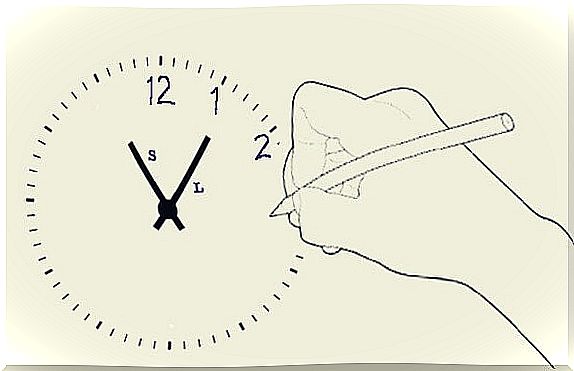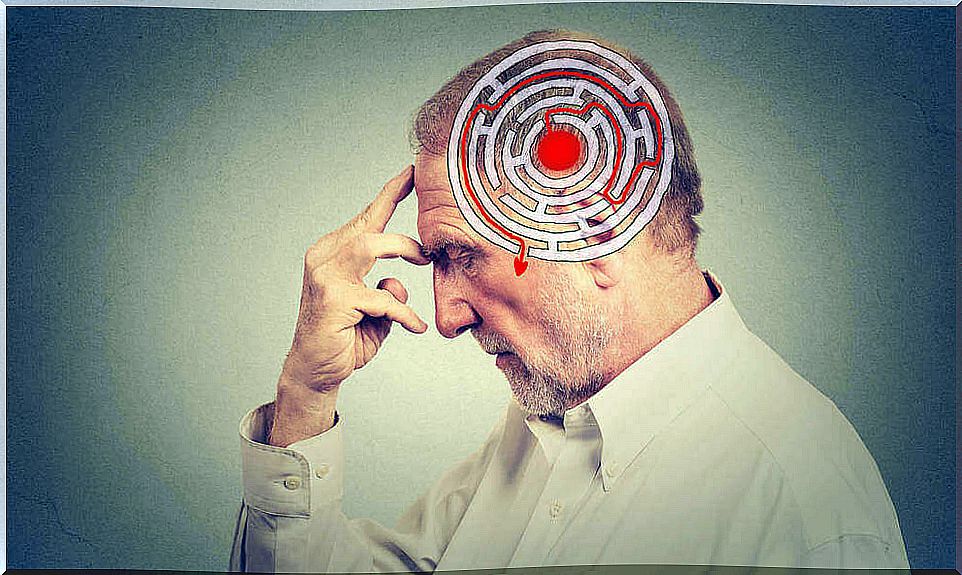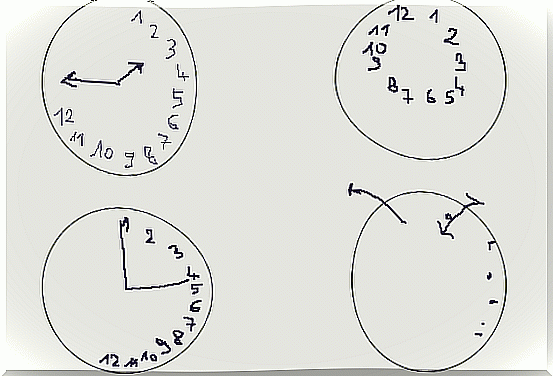The Clock Drawing Test To Diagnose Illnesses And Mental Disorders

The clock drawing test is a very simple diagnostic test to perform. Its goal is to assess the cognitive deterioration of patients and to be able to diagnose possible neurological and psychiatric disorders. Since its first use in 1953, this test has generally been one of the most widely used for early identification of Alzheimer’s disease or other forms of dementia.
It is quite possible that at present, if we say that this test relies “only” on asking a person to draw a clock with the hands marking 11:10, more than one person will doubt it. validity and diagnostic effectiveness. However, there are a number of practical aspects that we need to consider about this (apparently) simple task.
First of all, we must understand the order requested: “draw a clock that marks such and such a time”. Later, the person will have to plan, pay attention to his motor performance, adjust his visual perception, his visuo-motor coordination and his visuo-constructive capacity. It is not that simple, in fact, the cognitive efficiency required for the clock test makes it one of the most useful tests, especially if we compare it to more complex, more expensive and less reliable tests. .

The clock drawing test to assess a deficit in cognitive abilities
This test was first developed and applied in 1953. It sought to assess constructive apraxia (common in dementia) and to identify the extent of damage to the parietal cortex. Gradually, and noting its effectiveness, it became an essential instrument for diagnosing the cognitive deterioration associated in particular with the first phases of Alzheimer’s disease.
The administration of this test, as stated previously, is straightforward. However, it must be guided and analyzed by a qualified psychologist, since from the test of the clock drawing we can identify various disorders, deficits or brain damage. It should also be noted that there are up to 15 different ways to assess this test.
How is the clock test performed?
Typically, the practitioner can choose to administer the test in two ways:
- Drawing the clock through instructions: in this case the patient is given a blank page where he has to draw a clock that marks 11:10. It is important that the sphere contains the correct distribution of each hour.
- In the other case, the patient may also be asked to copy the model of an already drawn clock. The copy must be exact: numbers, size of the dial, hands, etc.
- When the patient finishes the test, he is asked if he has finished and if he thinks he has done well.
It is very likely that we are now wondering why the clock has to mark exactly 11:10. Something as simple as this implies that the 2 visuo-attentional hemics must participate. It also requires that the person process the instruction, understand it, remember the time, the distribution of each time zone, and the proper planning of each hand.

How is the clock drawing test evaluated?
As we pointed out earlier, there are several ways to assess this test. We see no rmalement sphere, number order, orientation, if they are inside or outside of the sphere, where are located on one side or even if there is excess numbering. For example, for patients with schizophrenic disorders, we can observe an almost millimeter obsession with signaling every minute, which turns the drawing into a bizarre, mottled and almost incomprehensible composition.
The case of a patient
Maria is 80 years old and is going for the first time, together with her children, to see a psychologist. “I’m forgetting things,” she laughs as her family nods with a worried expression. The professional, after collecting some data and having a conversation with Maria to relax her and get to know her better, asks her to draw a clock that marks a very precise time, 11:10 a.m. The result is the one we see below.

Maria’s cognitive decline is evident. This test will not be the only one that will be performed in this patient, the diagnosis of Alzheimer’s will be confirmed (or not) with other neuropsychological strategies. However, the clock design test is a starting point and offers some reliable and revealing information.
Maria is already elderly and loss of cognitive skills is common. In addition, it should be noted that this test has been refined in recent years. There is even a pen designed by the “Massachusetts Artificial Intelligence and Computing Laboratory” (MIT) that records the pulse, accuracy, interruptions, tremors and other irregularities that the patient may have.
Thousands of parameters can be extracted using this technology, but the most interesting is that it allows an early diagnosis of Alzheimer’s disease or Parkinson’s disease. Early detection gives us the opportunity to develop better strategies, apply appropriate treatments to provide comprehensive patient care, as well as a better quality of life to slow the progression of the disease. Therefore, the clock drawing test will remain one of the best tools for the detection of this type of diseases.









